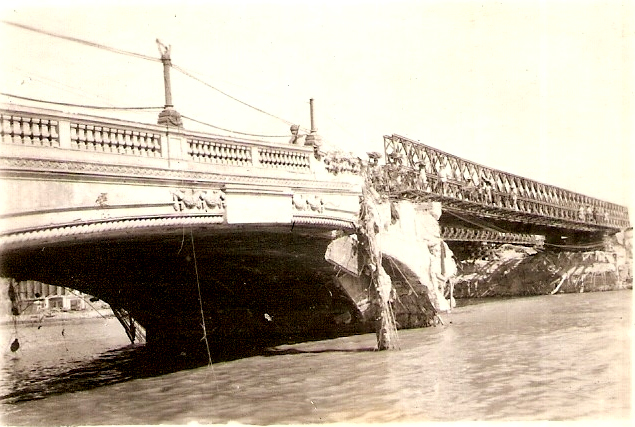The Jones Bridge during its prime years. © Flickr/John T. Pilot
Have you ever wondered why Manila was called names such as "Queen of the Pacific", "Pearl of the Orient", "Venice and Paris of the Orient", "Paris on the Prairie", and "Most Beautiful City in the Far East"? It is because of its architectural beauty, a melting pot of cultures from Europe, America and Asia thus create a fusion of east and west. Bridges were part of Manila's architectural beauty, one of the was the ever-beautiful Jones Bridge. Jones is not just a bridge, it's the bridge for it is considered as "Manila's Queen of all Bridges".
Jones Bridge's most famous photo, alongside with other Arellano masterpieces such as the Post Office Building and the Manila Metropolitan Theatre. © Arkitekturang Filipino
The Jones Bridge was a neo-classical (but more of a beaux-arts) bridge designed by the great Juan Arellano, who also built a number of prominent structures in Manila, namely the Post Office Building, the Old Legislative Building (now the National Museum), and the Metropolitan Theatre. The bridge spans the Pasig River which connects Burgos Drive at one end, and at Plaza Cervantes on the other.
The Jones Bridge during the 1920s. Note that the construction of the Post Office Building has just started. © Arkitekturang Filipino
The Jones Bridge replaced a much smaller bridge a few meters from the present site. The old Puente de España was built in 1875 during the Spanish occupation of the Philippines. During the American occupation, the bridge was widened so it could accommodate more traffic. Then in 1914, non-stop rains damaged the bridge's piers. In 1916, the Americans commissioned Juan Arellano, who was then a member of the Bureau of Public Works, to design a bridge.
Jones Bridge during its construction. © Arkitekturang Filipino
Workers installing the steel frames of the Jones Bridge. © Arkitekturang Filipino
The construction of the new bridge started in 1919 and was completed in 1920. The bridge was inaugurated in 1921 as Jones Bridge, in honor of the American lawmaker William Atkinson Jones.
The Jones Bridge is reminiscent to those of Paris, particularly the Pont Alexandre III. © Skyscrapercity.com
An illustration of the gilded piers, balustrades, lampposts, and arches of the grand Jones Bridge. © Arkitekturang Filipino
Aside from its ornate piers, arches, and balustrades, there were four (4) pillars with statues adorned the bridge. The famous of all the statues was the La Madre Filipina, or "The Filipina Mother". All the statues were commissioned by Juan Arellano to sculptor Martinez.
La Madre Filipina. © Nostalgia Filipinas
Jones Bridge facing north, going towards Binondo. Note the two pillars adorning the bridge. © Skyscrapercity.com
Jones Bridge looking west towards Manila Bay. The Post Office can be seen on the left side and the Binondo and Escolta business area on the right. © Flickr/John T. Pilot
The Battle of Manila brought destruction to the entire city, including the Jones Bridge. The bridge was bombed by the Japanese Imperial Forces in to delay the advance of the American forces. After the war, it was rebuilt through the Philippine Rehabilitation Act. The bridge was rebuilt still under its original name, but not its original neo-classical design.
Jones Bridge after the war. A temporary bailey bridge was installed to connect the two points of the city. © Lougopal.com
After the war, the bridges four pillars were placed throughout the city. The most famous, the La Madre Filipina, was placed at the Rizal Park. The two other pillars were reportedly seen at the Court of Appeals Building in Manila, and the other one is nowhere to be found.
Jones Bridge at the present time. ©Flickr/risadlp













